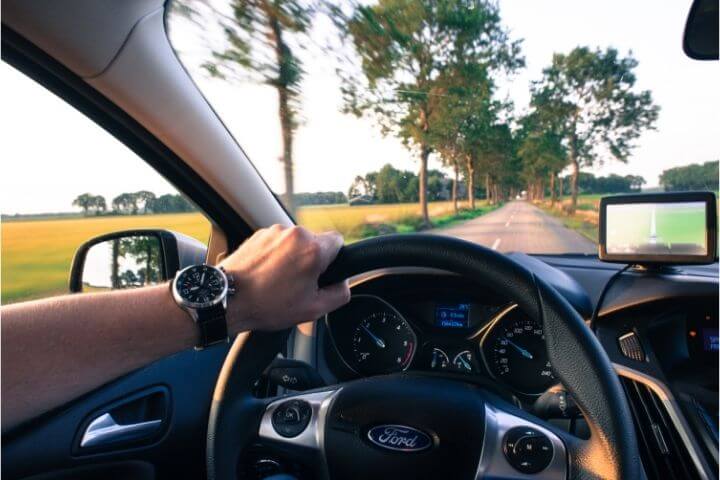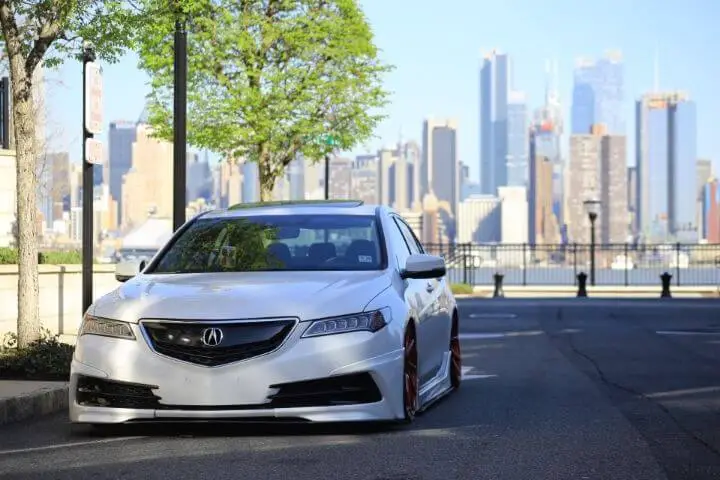Yes, Medicare does pay for hand controls in automobiles. But there is a process to it.

Read on to understand how you can get hand controls in your vehicle and get Medicare to pay for it.
Contents
How Do Hand Controls Help in Driving an Automobile?
Do you feel as though you could still drive your vehicle and have some independence if your vehicle just had the adaptive hand controls?
Hand controls are a great development in making driving much more accessible for those who still can drive a vehicle but perhaps cannot do so with using foot controls.
Modifying a vehicle to add adaptive hand controls can become pretty expensive, depending on which kind of controls you would need to make driving accessible for you.
Going through a life-changing injury or illness that impacts activities you used to do all the time – like driving – can easily become challenging or even impossible.
With the help of vehicle modifications like hand controls, automatic door openers, left foot accelerators, and even dropped floors can really help give you your sense of independence back.
Getting Approved for Modifying Your Vehicle
The process for getting modifications added to your vehicle doesn’t just happen, you need to have a referral to a doctor who will assess your abilities and determine if they believe you can safely operate a vehicle with these modifications.
You will also need some training – almost like going back to driver’s education – to make sure you understand how everything with the vehicle works and you will be able to control the vehicle as you would have previously.
How Much Does Modifying a Vehicle Cost?
If you’ve been approved for adding hand controls (or other modifications to make your vehicle more accessible), you will probably want to know how much it’s going to cost you and if you need to upgrade your vehicle.
Well, the good news is that the hand control adaptations will work with almost all modern vehicles – so you don’t need to worry about purchasing a new vehicle.

The only time that this may not be true is if you are in a wheelchair and the vehicle you currently own is not big enough to be retrofitted to fit a wheelchair in for driving (but this will be determined during your assessment and evaluation).
So, you don’t have to buy a new vehicle – which is great news – and now onto the cost of retrofitting your vehicle with the accessibility functions needed.
Adding hand controls to your vehicle will start (likely) at around $500 and could go up to $2,000 for basic hand control functionality.
Now, if you need a lot of technological options or something a little more advanced then the modifications could cost you up to $100,000 to make the vehicle completely functional for you.
Does Medicare Cover Any of That Cost?
If you don’t have the funds to cover these modifications (and it can be a lot, especially if you have medical bills you need to cover from healing from an injury or illness) and you’re on Medicare benefits you may be able to get some funding from Medicare to help you out.
How Do I Get Medicare to Pay For Installing Hand Controls in My Automobile?
Well, this may be the part that is a challenge. So first, in order to be eligible for coverage of the expenses you will need to undergo an evaluation from a doctor that is a Medicare-accepted practitioner.
Next, it has to be agreed that the equipment will only be used for a medical reason by the person who is covered under the Medicare benefits.
Your healthcare provider, who is the one that is under Medicare assignment, must actually prescribe this medical equipment to you and that it will benefit you to become and/or stay independent.
Eligibility Evaluation for Hand Controls
Part of getting the funding from Medicare is an evaluation to make sure you are truly eligible for this kind of help. The main post of this evaluation is to make sure the adaptive medical equipment is absolutely necessary.
The evaluator will be trained to help you find the right solution for you and will provide an official assessment of your driving abilities and needs, and what their official recommendation is for your adaptive modifications.

What Happens During the Evaluation?
This assessment will consist of both a clinical assessment and a physical driving test. During the clinical part, you will be tested on your vision, perception, ability to judge distance and even your reaction/decision making time.
They may also look at your motor functions and coordination – maybe even your muscular strength.
Now, for the driving test part. This part of your evaluation will consist of an examiner monitoring you using some of the adaptive equipment behind the wheel of a vehicle.
This test will determine if you can drive, or if you need more assistance in driving with some training and/or rehabilitation. This will help the evaluator determine what kind of modifications or adaptive equipment you would need to be able to drive a vehicle safely and effectively.
You will need a referral from a healthcare provider to schedule this evaluation. This referral can come from your family doctor, eye doctor or even an occupational therapist.
How Much Does Medicare Pay For Hand Controls?
This is also kind of a questionable area. Medicare will typically pay 80% of the Medicare-approved cost for the medical equipment being prescribed for you.
You must also make sure you are purchasing the equipment from a company that is Medicare-approved and it is being installed by a professional who is also on the list of Medicare-approved providers.
You (or your family) will be responsible for paying the remaining 20% plus the deductible amount (which is around $200).
So, How Much Can You Expect to Pay After Medicare Pays Its Part?
The hard part about this is trying to estimate what the total amount of your modifications will be. As mentioned, these modifications can range from $500 to $2,000 for basic adaptive equipment but it could go much higher if you have a specialized need.
There are so many kinds of adaptive equipment for vehicles that there isn’t an average price range to give – which can make it hard to budget for what this might cost.
Most of the equipment must be installed by a professional so that Medicare will know it’s done properly and they will then cover their part of the cost.
You will also need to make sure – before you have the work done – that the company you’re purchasing the equipment from and having it installed by will accept Medicare assignment.
If you have questions about these providers, and where to find one, you can contact Medicare for a list of companies that accept Medicare assignment.

Where Do You Start With Getting Hand Controls for Your Car?
The first place to start is to have a conversation with your family doctor or physical/occupational therapist and start discussing your concerns and the troubles you are having with driving.
From there, your medical team can start the process for making driving that much more accessible for you. It might take a little while to get a referral into an evaluation, so you may have to be patient for that part.
However, the most important thing is to take the first step and talk to your doctor about the concerns you’re having and how you might be able to make some changes.
Living with a disability or healing from an injury that has changed your life might feel like you’re never going to drive again and therefore won’t have your independence.
That isn’t true, at all. In fact, with today’s technological advancements you can adapt your vehicle to fit your needs and allow you to be as independent as you want.
By initiating those conversations with your doctor and medical team, you can start the process of getting the adaptive modifications covered by Medicare.
When you have Medicare benefits, you can definitely use them to help you out and make your life just a little easier – especially when you may have to have some extensive modifications to your vehicle that can become very expensive.
Even though Medicare may not cover all the costs of these changes, covering up to 80% can really help you out and save you a lot of money.
This can be especially helpful if you have medical bills you are still recovering from or just the other general living expenses. If you are only responsible for paying for 20% of the total bill, you may be able to make these changes because the financial burden is just a little less.
If you have questions about the options that are available to you for making driving more accessible, call your medical team to start the conversation and get the information you need.
By considering your options you can much more easily make an informed decision. It’s also important to think about how long you may realistically be driving for and if these options will benefit you long-term, really.
If this is an option for you, it can open up so many doors for independence and allow you to stay on your own without the assistance of friends and family (as often).
Start the process of getting your independence back with some vehicle modifications today!
